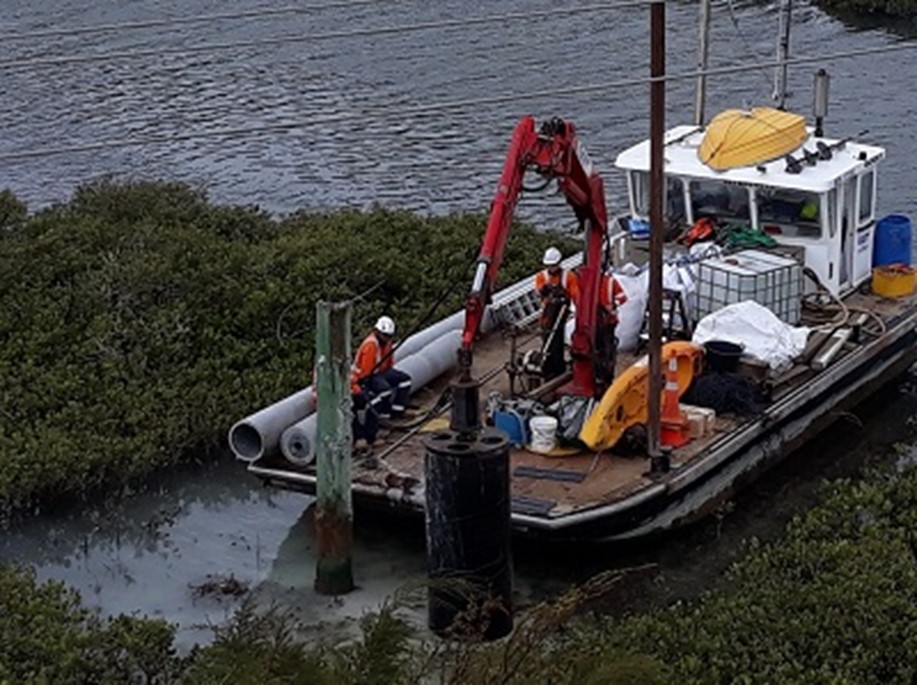New power line over western Bay of Plenty estuary
A high-voltage line providing power between Ōmokoroa and Aongatete in the western Bay of Plenty has been carefully reconstructed over an estuary.
Our services contractor, Downer, completed the challenging project in June 2022, which included 12 wooden power poles especially made and shipped from Australia, crossarms and overhead electricity line being replaced across the Te Puna Estuary. It's a project that was in the planning, design, procurement and resource consent stages for two years.
Ahead of the $665,000 project, we let local the local community know about the work to renew the 33kV line.
“We appreciated that members of the community may have had questions about the possibility of locating the line under the Te Puna Estuary, instead of running over it. We wanted to let them know that we’d given careful consideration to all options, and were mindful of the visual, environmental and financial impacts,” our Customer Experience Manager Haydn Davies says.
“Our conclusion was that renewing and replacing the existing overhead assets was the best option. This was because overhead designs are more readily accessible, meaning they can be regularly inspected and maintained. Additionally, if any issues occur, or the community’s power supply was disrupted, our team could more easily locate faults to restore their connection.”
Financially, underground lines carry a significantly greater cost, while marine power cables spanning waterways also carry additional potential risks to water users.
Downer Project Manager Anthony Brill said the project was challenging because of where the poles were located.
“Gaining access to each pole was a challenge. We could not use excavators as no civil companies would take their equipment into the estuary and it is an environmentally sensitive area. As a solution, we engaged a barge company that had a HIAB crane on the deck. The main issue was getting the barge under the railway bridge because this had to done at low tide.
“We started planning the project 12 months in advance, to work out the days that had low tides in the morning which provided the maximum amount of daylight required to complete the day’s activities. This gave us a small window to get to each site, complete the allocated work, then get back to the temporary pontoon which we set up as a docking and loading site."
The other challenge the team faced was that three of the 12 poles were in the middle of established mangroves. A resource consent was needed to remove a pathway through the mangroves to allow the barge to get close enough to replace the poles.


